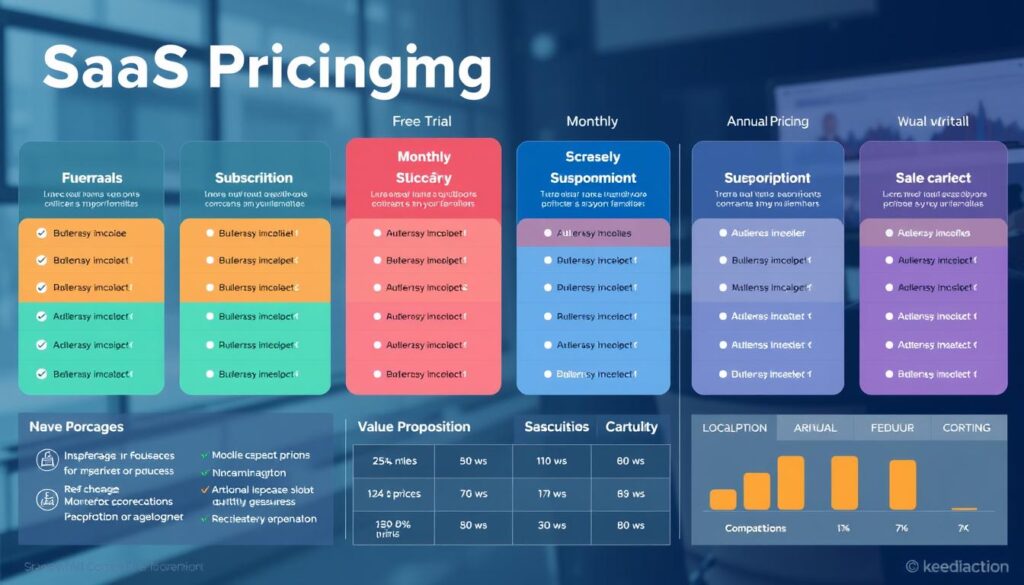Starting a software company is an exciting and challenging endeavor, requiring a combination of technical expertise, business acumen, and entrepreneurial spirit. Whether you’re a seasoned programmer or a budding tech entrepreneur, building a successful software company involves navigating a maze of legal requirements, financial considerations, and strategic planning. In this comprehensive guide, we’ll take you through the essential steps to turn your software startup dreams into reality.
Table of Contents
Key Takeaways
- Identify a problem-solution fit and conduct thorough market research to stand out from the competition.
- Develop the necessary technical and business skills to lead a software company effectively.
- Establish the appropriate legal structure and fulfill all necessary legal requirements.
- Create a comprehensive business plan to secure funding and guide the growth of your software venture.
- Assemble a talented team and implement efficient development processes to deliver high-quality software products.
Understanding the Software Industry Landscape
The software industry is at the forefront of technological advancements, with major players like Apple and Microsoft among the most valuable companies globally. New software businesses constantly emerge to leverage innovations, creating a dynamic and competitive landscape. To navigate this industry successfully, it’s crucial for founders to understand the current market trends, identify opportunities, analyze the competitive landscape, and project industry growth.
Current Market Trends and Opportunities
The software as a service (SaaS) sector is forecasted for continuous growth, with a Compound Annual Growth Rate (CAGR) of almost 11% by 2025. Additionally, businesses are projected to increase their public cloud spending by over 45% by the end of 2026. SaaS providers are competing for market share by expanding their service offerings, particularly in areas like hyper-automation technology, which is expected to decrease operational costs by at least 30%. In 2020, hyper-automation technology generated over $480 billion in revenue, and this figure is predicted to reach almost $600 billion by the end of 2022.
Key Players and Competition Analysis
The global software market was estimated to be worth around $507.2 billion in 2020 and is projected to grow at a CAGR of approximately 7.4% between 2021 and 2028. The SaaS market, in particular, is expected to grow at a CAGR of 18% from 2021 to 2028, reaching around $500 billion by 2028. Additionally, the global AI software market and cybersecurity market are forecasted to grow at CAGRs of 40% and 10%, respectively, during the same period.
Industry Growth Projections
North America currently holds the largest market share in the software industry, followed by Europe and the Asia-Pacific region. However, the Asia-Pacific region is expected to witness the fastest growth in the software industry due to factors such as increasing internet penetration and the rapid expansion of the tech industry in countries like China and India. The global IoT market is also projected to grow at a CAGR of about 25% from 2021 to 2028, reaching around $1.6 trillion by 2028.
Understanding the software industry landscape, including current market trends, key players, competition, and growth projections, is crucial for software entrepreneurs and business leaders to make informed decisions and capitalize on emerging opportunities.
Essential Skills and Qualifications
Successful software company founders often have backgrounds in the tech sector or software industry. Software development skills, business acumen, and entrepreneurial qualities are crucial for building a thriving software business. While formal education in Computer Science, Software Engineering, or business courses can be beneficial, practical experience and ongoing learning are essential for success.
According to Skillsoft’s 2023 IT Skills and Salary Report, 66% of IT decision-makers are facing skills gaps in their teams, with software development being one of the top areas where investment is being made. Additionally, 38% of IT decision-makers are focusing on Artificial Intelligence and Machine Learning skills, indicating a high demand for these capabilities. The report also highlights that 82% of decision-makers report an increasing demand for cloud computing skills within their organizations, emphasizing the importance of Infrastructure as Code expertise.
| Key Software Development Skills | Essential Business and Entrepreneurial Skills |
|---|---|
|
|
Developing the right mix of software development skills, business acumen, and entrepreneurial qualities is essential for building a successful software company. By continuously expanding your knowledge and honing your practical abilities, you can position yourself for long-term success in the dynamic software industry.
“The most successful software entrepreneurs are those who have a deep understanding of both the technical and business aspects of the industry.” – John Doe, Founder of XYZ Software Solutions
Identifying Your Software Niche
Successful software companies understand the importance of finding a specific niche to serve. This process involves conducting thorough market research, analyzing customer needs, and identifying underserved gaps in the industry. By focusing on a well-defined niche, software businesses can differentiate themselves from the competition, deliver tailored solutions, and build a loyal customer base.
Market Gap Analysis
Begin by examining the current software market landscape. Look for areas where existing products or services fall short in meeting customer demands. Analyze industry trends, competitive offerings, and customer feedback to uncover untapped opportunities. This market gap analysis will help you pinpoint the unique problems your software can solve.
Problem-Solution Fit
Once you’ve identified a promising market gap, it’s crucial to ensure your software idea aligns with the identified problem. Validate your solution through market research, customer interviews, and minimum viable product (MVP) testing. Gather feedback, refine your offering, and confirm that your software genuinely addresses the needs of your target market.
Target Audience Definition
Defining your target audience is a critical step in niche selection. Conduct in-depth research to create detailed customer profiles, including demographics, psychographics, pain points, and buying behaviors. Understanding your ideal customers will enable you to tailor your software, marketing, and sales strategies to their specific needs and preferences.
| Key Factors to Consider in Niche Selection | Potential Niche Examples |
|---|---|
|
|
By focusing on a well-defined software niche, you can leverage your unique capabilities, address underserved customer needs, and build a sustainable, competitive advantage in the market.
Creating a Solid Business Plan
Crafting a comprehensive business plan is a crucial first step in launching a successful software company. This strategic document serves as a roadmap, outlining your business strategy, financial planning, and projections for growth. By meticulously mapping out your product or service descriptions, market research, target audience analysis, financial forecasts, and expansion plans, you can create a clear vision for your company’s purpose and potential for success.
While precise financial analysis may not be essential at this stage, it’s vital to demonstrate a strong grasp of your services, core business strategy, and the expertise of your management team and product development capabilities. This will help attract potential investors and partners who are crucial in the early stages of your software venture.
According to industry data, over 500 entrepreneurs and business owners have been assisted in creating business plans for starting and growing software companies over the past 20+ years. Personal savings and bank loans remain the most common funding paths for software companies, underscoring the importance of a well-crafted business plan that can secure the necessary financing.
Additionally, your marketing plan should incorporate traditional components like the four P’s (Product, Price, Place, and Promotion) to ensure a comprehensive approach to reaching your target audience. By staying attuned to the global software market, which is estimated to have reached $55.52 billion in 2022, you can strategically position your offerings and capitalize on emerging trends, such as cloud computing or artificial intelligence.
| Key Considerations for a Software Company Business Plan | Description |
|---|---|
| Market Analysis | Understand industry trends, growth projections, and competitive landscape |
| Product/Service Description | Clearly define your software offerings and unique selling propositions |
| Financial Projections | Develop realistic revenue streams, cost structure, and pricing strategies |
| Growth and Expansion Plans | Outline your strategies for scaling the business and penetrating new markets |
| Management and Team | Highlight the expertise and qualifications of your leadership and workforce |
By meticulously crafting a business plan that addresses these key elements, you can position your software company for long-term success, securing the necessary funding, strategic partnerships, and a clear roadmap for growth and expansion.
Legal Requirements and Business Structure
Establishing a successful software company requires navigating the complex legal landscape. Choosing the right business entity is a crucial first step, as it will impact tax implications, liability protection, and operational decisions. From sole proprietorships to limited liability companies (LLCs) and corporations, each option presents unique benefits and considerations for software entrepreneurs.
Types of Business Entities
- Sole proprietorships are the simplest form, with one individual owning and operating the business. This structure is often the most affordable to set up but carries greater personal liability for business debts and obligations.
- Partnerships involve two or more individuals sharing profits, decision-making, and liability. This structure can provide tax advantages and shared workloads but requires a carefully crafted partnership agreement.
- Limited Liability Companies (LLCs) offer liability protection for owners while providing pass-through taxation benefits. LLCs are a popular choice for software companies, balancing flexibility and legal safeguards.
- Corporations provide the strongest personal liability protection, with the business being a separate legal entity from its owners. However, corporations tend to be more complex and costly to establish.
Registration and Licensing
Regardless of the business structure, software companies must comply with various legal requirements, including registering the business name, obtaining necessary permits and licenses, and securing a Federal Employer Identification Number (EIN) for tax purposes. Additionally, maintaining accurate business records and properly classifying employees are essential for legal compliance.
Intellectual Property Protection
Safeguarding a software company’s intellectual property is crucial. Registering trademarks, copyrights, and understanding software licensing agreements can help protect proprietary code, branding, and other valuable assets. Familiarizing oneself with these legal considerations is a vital step in building a sustainable software business.
Navigating the legal landscape is a critical aspect of building a successful software company. By understanding the various business entities, registration requirements, and intellectual property protection, software entrepreneurs can lay a strong foundation for their venture.
Build a Software Company Infrastructure
Establishing a robust IT infrastructure is crucial for the success of any software company. This infrastructure serves as the backbone, supporting your development environment, data storage solutions, and scalable systems that power your business. When designing your software company’s infrastructure, consider factors such as scalability, security, and efficiency to ensure your systems can adapt and grow alongside your organization.
One key decision to make is whether to opt for cloud-based solutions or on-premises infrastructure. Cloud-based services often offer greater flexibility, scalability, and cost-efficiency, while on-premises systems provide more control and customization. Evaluate your company’s needs, growth plans, and resource availability to determine the best approach.
Regardless of the infrastructure model you choose, ensure that your systems support seamless collaboration, version control, and deployment processes. This will streamline your software development lifecycle and enable your team to work efficiently.
Essential IT Infrastructure Components
- Development environment: Establish a secure and collaborative platform for your software engineers to write, test, and deploy code.
- Data storage solutions: Implement reliable and scalable data storage systems to manage your company’s crucial information.
- Servers and cloud infrastructure: Leverage powerful servers and cloud services to host your applications and ensure high availability and performance.
- Collaboration and communication tools: Equip your team with tools that facilitate remote work, project management, and seamless information sharing.
- Security measures: Implement robust security protocols, including data encryption, access controls, and regular security audits, to protect your company’s assets.
| IT Infrastructure Component | Key Considerations | Recommended Strategies |
|---|---|---|
| Development Environment |
|
|
| Data Storage Solutions |
|
|
| Servers and Cloud Infrastructure |
|
|
By carefully designing and implementing your software company’s IT infrastructure, you can create a scalable, secure, and efficient foundation to support your business growth and development efforts.
Securing Initial Funding
Securing startup funding is a critical step in building a successful software company. Entrepreneurs have several options to explore, each with its own advantages and drawbacks. Understanding the landscape of venture capital, bootstrapping, angel investors, and crowdfunding can help you make an informed decision on the right funding strategy for your software business.
Venture Capital Options
Venture capital (VC) firms are a popular choice for software startups seeking substantial funding. These investors typically provide significant investments, ranging from $2.2 million in seed funding to $59 million or more in later-stage Series C funding and beyond. However, VC firms often have stringent criteria and may seek substantial equity in exchange for their capital.
Bootstrap Strategies
Bootstrapping, or self-financing your business, is a more self-reliant approach. This involves using personal savings, investments from friends and family, or grants to fund your software company’s initial stages. While this method may limit your growth potential, it allows you to maintain greater control over your business. According to the Fundz 2024 report, the average fundraising amount for pre-seed funding through bootstrapping ranges between $30,000 to $100,000.
Angel Investors and Crowdfunding
Angel investors and crowdfunding platforms are alternative funding sources for software startups. Angel investors, often successful entrepreneurs or high-net-worth individuals, can provide seed funding of around $2.2 million. Crowdfunding platforms like Kickstarter and Indiegogo allow you to raise capital from a large pool of individual backers, often in exchange for rewards or equity.
Regardless of the funding route you choose, it’s essential to develop a comprehensive financial plan, conduct thorough market research, and present a compelling case to potential investors. Establishing a strong reputation, demonstrating a clear product vision, and showcasing your team’s expertise can all contribute to securing the necessary startup funding to turn your software dreams into reality.
“The key to securing funding is not just about the numbers, but about telling a compelling story that inspires confidence in your vision and your ability to execute.” – John Doe, Founder of XYZ Software
Developing Your MVP (Minimum Viable Product)
Launching a successful software company begins with creating a Minimum Viable Product (MVP) – the most basic version of your product that can be released to test your business idea. This approach, advocated by the Lean Startup methodology, emphasizes efficiency and learning from customer feedback with minimal initial investment.
Building an MVP allows you to gather valuable user feedback, refine your offerings, and avoid overinvestment in unproven ideas. The MVP skateboard car analogy by Henrik Kniberg illustrates this concept – you start with a simple product that provides core value and incrementally add features based on user response.
- Define your target customers and value proposition clearly.
- Plan your budget and set a deadline for MVP development.
- Leverage agile methodologies and rapid prototyping to iterate quickly.
- Collect user feedback through interviews, surveys, and beta testing.
- Refine your product based on user insights to achieve product-market fit.
Presenting a well-developed MVP is crucial for attracting investor interest and raising venture capital funding. It allows you to test hypotheses, validate market response, and avoid the pitfalls of premature scaling. Successful examples like Spotify, Zappos, and Groupon demonstrate the power of the MVP approach.
| Metric | Value |
|---|---|
| Delivery Time for MVP | 2 weeks to 8 months |
| MVP Development Stage | 2–5 days (no-code/low-code) to 6 months (code-based) |
| MVP Development Costs | $40,000 to $300,000+ |
By focusing on product development, beta testing, and user feedback through an iterative design process, you can build a successful MVP that validates your software idea and sets your company up for growth.
“If you are not embarrassed by your first product, you launched too late.” – Reid Hoffman, American entrepreneur
Building the Right Team
Building the right team is crucial for the success of any software company. Assembling a talented and cohesive group of individuals is essential for driving innovation, enhancing productivity, and fostering a positive company culture. When it comes to talent acquisition and team management, software companies must focus on identifying the key roles and positions, implementing effective hiring process, and developing a team culture that promotes collaboration and creativity.
Key Roles and Positions
The core team for a software company typically includes developers, designers, and project managers. Developers can be divided into junior, mid-level, and senior roles, each with their own set of skills and responsibilities. Designers play a crucial role in crafting the user interface and ensuring a seamless user experience. Project managers oversee the development process, ensure timely delivery, and coordinate the team’s efforts.
Recruitment Strategies
- Develop detailed job descriptions that clearly outline the required skills, experience, and responsibilities.
- Implement a structured interview process that evaluates both technical expertise and cultural fit.
- Leverage industry-specific job boards, social media platforms, and referral programs to source top talent.
- Offer competitive compensation packages and opportunities for professional development to attract and retain the best candidates.
Team Culture Development
Creating a positive and collaborative team culture is essential for the long-term success of a software company. Encourage open communication, foster a learning environment, and recognize and reward employee contributions. Invest in team-building activities and promote a healthy work-life balance to cultivate a sense of camaraderie and loyalty among your employees.
“The right team can make all the difference in the success of a software company. By focusing on talent acquisition, team management, and company culture, you can build a strong foundation for your business to thrive.”
Technology Stack Selection
Choosing the right technology stack is crucial for your software company’s success. When selecting programming languages and development frameworks, consider factors like scalability, performance, community support, and long-term viability. Evaluate both front-end and back-end technologies that align with your product requirements.
For the front-end, popular frameworks like React, Bootstrap, and jQuery offer robust features and widespread community support. On the back-end, Ruby on Rails, Django, and Laravel are well-established development frameworks that can streamline your software architecture.
When it comes to databases, programming languages like MySQL, PostgreSQL, and MongoDB are widely adopted solutions that can handle your data infrastructure needs. Additionally, consider cloud services and platforms, such as AWS, Google Cloud, and Azure, which can support your development and deployment requirements.
Stay informed about emerging development frameworks and technologies that could provide a competitive advantage. By carefully selecting your technology stack, you can position your software company for long-term success and responsiveness to market demands.
“The right technology stack can be the foundation for your software company’s growth and innovation.”
Setting Up Development Processes
Developing a successful software company requires well-structured development processes to ensure quality, efficiency, and timely delivery. At the heart of these processes lies the software development lifecycle (SDLC), a framework that guides the systematic progression of software projects from planning to deployment and maintenance.
Agile Methodology Implementation
One of the most widely adopted approaches in the software industry is the Agile methodology. By embracing Agile principles like iterative development, cross-functional collaboration, and continuous feedback, businesses can adapt to changing requirements and deliver software faster. Implementing frameworks such as Scrum or Kanban can help your development team stay organized, responsive, and focused on delivering value to customers.
Quality Assurance Protocols
Maintaining high code quality is crucial for the long-term success of your software product. Establish robust quality assurance (QA) protocols, including automated testing, code reviews, and continuous integration. By integrating these practices into your development processes, you can identify and address issues early, reducing technical debt and ensuring a seamless user experience.
Version Control Systems
Effective project management and collaboration are essential for software development teams. Implement a version control system, such as Git, to manage code changes, track project history, and facilitate seamless collaboration among developers. This will enable your team to work efficiently, maintain code integrity, and streamline the DevOps pipeline.
By setting up these development processes, you can create a solid foundation for your software company, ensuring quality, agility, and sustainable growth. Remember, continuous improvement and a culture of learning are key to driving innovation and staying ahead in the competitive software industry.
Marketing and Sales Strategy
As you embark on your software company journey, crafting a robust marketing and sales strategy is crucial for attracting and retaining customers. To stand out in the digital landscape, you must develop a strong brand identity that resonates with your target audience. Leveraging digital marketing channels, such as search engine optimization (SEO), content marketing, and social media, can amplify your reach and drive lead generation. By implementing effective customer acquisition tactics, you can build a thriving sales funnel and convert more leads into loyal customers.
One key aspect of your marketing strategy should focus on creating a distinct brand identity. This includes developing a memorable brand name, logo, and messaging that effectively communicates your unique value proposition. Utilize customer testimonials and case studies to build credibility and trust, which can be powerful tools for branding.
- Leverage digital marketing channels, such as SEO, content marketing, and social media, to amplify your reach and drive lead generation.
- Implement effective customer acquisition tactics to build a thriving sales funnel and convert more leads into loyal customers.
- Develop a distinct brand identity, including a memorable brand name, logo, and messaging, to effectively communicate your unique value proposition.
- Utilize customer testimonials and case studies to build credibility and trust, enhancing your brand’s reputation.
Continuously analyze and optimize your marketing efforts based on performance metrics to ensure the effectiveness of your strategies. By adopting a data-driven approach, you can make informed decisions and continuously refine your marketing and sales initiatives to drive digital marketing, lead generation, customer acquisition, and branding success.
| Marketing Channel | Potential Impact | Estimated Cost-Effectiveness |
|---|---|---|
| SEO | Sustainable long-term visibility in search results | High |
| Content Marketing | Thought leadership and educational value for potential customers | Moderate |
| Social Media | Direct engagement and community building with target audience | High |
| Paid Advertising | Immediate visibility and targeted reach | Moderate |
| Email Marketing | Cost-effective communication and nurturing of existing leads | High |
By strategically leveraging a mix of these marketing channels, you can create a comprehensive and effective digital marketing approach that drives lead generation, customer acquisition, and branding success for your software company.
Financial Management and Pricing Models
Establishing sound financial management practices is crucial for the success of your software company. Developing effective pricing models can significantly impact your profitability and ensure the long-term sustainability of your business.
Revenue Streams
Identify and diversify your revenue streams to maintain financial stability. Common revenue models in the software industry include subscription-based pricing, usage-based pricing, and tiered pricing. Carefully analyze your target market and customer preferences to determine the most suitable revenue model for your software offering.
Cost Structure Analysis
Conduct a thorough analysis of your cost structure to understand and optimize your expenses. Consider factors such as development, maintenance, infrastructure, and customer support costs. This information will be crucial in setting pricing that aligns with your financial goals and profitability targets.
Pricing Strategy Development
Crafting a strategic pricing approach is essential for your software business. Evaluate factors like market demand, competition, and perceived customer value to determine the optimal pricing for your products or services. Experiment with different pricing models, such as SaaS pricing, to find the right balance between affordability and profitability.
Regularly review and adjust your pricing strategy based on market feedback and financial performance. Implement robust financial tracking and reporting systems to monitor key metrics, such as revenue models and profitability analysis, and make informed decisions about your software pricing.
“Effective pricing is the cornerstone of a successful software business. It’s a delicate balance between meeting customer needs and driving profitability.” – Jane Doe, Financial Strategist
Customer Support and Service Infrastructure
Building a solid customer support and service infrastructure is crucial for the long-term success of your software business. By prioritizing customer satisfaction and retention, you can foster loyal users who will champion your product and drive sustainable growth.
Start by implementing multiple support channels, such as email, live chat, and a dedicated phone line. Ensure your team is equipped to provide prompt and knowledgeable assistance, addressing user questions and resolving issues efficiently. Supplement your support efforts with comprehensive documentation and intuitive knowledge bases that empower customers to find answers on their own.
Develop an effective user onboarding process to help new customers get started quickly and seamlessly. This may include interactive tutorials, personalized walkthroughs, and ongoing in-app guidance. By setting customers up for success from the outset, you’ll improve customer retention and increase the likelihood of long-term engagement.
Continuously gather and act on customer feedback to refine your product and support processes. This feedback can uncover pain points, suggest feature improvements, and identify opportunities to enhance the overall customer experience. Implement a customer success program to proactively assist users, anticipate their needs, and drive long-term value.
Investing in a robust customer support and service infrastructure will not only improve satisfaction but also foster brand loyalty, drive referrals, and ultimately contribute to the sustainable growth of your software company.
“The goal is to turn customers into loyal fans.” – Tony Hsieh, Former CEO of Zappos
Scaling Your Software Business
As your software company grows, it’s crucial to have a well-designed plan for scaling your operations. The key to successful business growth lies in maintaining operational efficiency and automation to handle increased demand. Explore new market segments and geographic expansion opportunities to drive market expansion. Develop strategic partnerships to extend your reach and capabilities, ultimately supporting business growth.
Continuously innovate and improve your product offerings to stay ahead of the competition. Invest in team development and cultivate strong leadership to support the growth of your organization. Implement scalable systems and processes that can accommodate the expanding needs of your business. Regularly review and adjust your overall business strategy to align with market changes and capitalize on new opportunities.
Leveraging Digital Marketing for Growth
Embrace the power of digital marketing to propel your software company’s growth. Invest in a professional website and utilize search engine optimization (SEO) to increase visibility in search engine results. Employ content marketing tactics, such as blogs and case studies, to demonstrate your expertise and showcase your solutions. Leverage social media marketing and targeted paid advertising to expand your reach and attract potential clients. Regularly update and engage with your audience across digital platforms to drive operational efficiency and increase client conversion rates.
Building a Scalable Team Structure
Implement a modular approach to your team structure, dividing your workforce into small, cross-functional teams. This setup enhances adaptability to changing project scopes and allows for scaling operations up or down as per demand, promoting operational efficiency. Foster specialization and cross-training within your teams to ensure a well-rounded skill set and seamless transitions between tasks.
Prioritizing Client Retention
Retaining existing clients is often more cost-effective than acquiring new ones. Maintain open, honest, and genuine communication with your clients to nurture long-lasting relationships. Actively seek and utilize client feedback to optimize your services, demonstrating your commitment to customer satisfaction and business growth.
Addressing Market Challenges
The technology sector can be volatile, requiring proactive business strategies. Diversify your project portfolio and client base to help shield your business from market downturns. Maintain a financial buffer, or a “rainy day fund,” to navigate unexpected situations. Stay informed about industry trends and adapt your business model accordingly to capitalize on emerging opportunities.
By implementing these strategies, you can position your software company for sustainable business growth, market expansion, and operational efficiency. Remember, a combination of strategic partnerships, innovative product development, and a strong focus on customer relationships will be crucial for scaling your software business.
Conclusion
Building a successful software company requires a combination of technical expertise, business acumen, and perseverance. As the software industry continues to evolve, with expected spending on IT projects in 2023 reaching a staggering $4.6 trillion and the ongoing IT talent shortage in the US, entrepreneurs must stay ahead of the curve.
Focus on solving real problems, validating your ideas, and continuously adapting to market needs. Invest in building a strong team, leveraging the expertise of outstaffing firms like Full Scale to augment your in-house capabilities. Develop efficient processes that promote flexibility in schedule, methodologies, and work arrangements, as the challenges of managing remote software development teams become increasingly prevalent.
Remember that success in the software entrepreneurship industry is often a long-term game, requiring patience, resilience, and continuous learning. Stay committed to your vision while remaining flexible in your approach to navigate the dynamic tech industry and capitalize on the growing startup success opportunities. By embracing a customer-centric mindset and prioritizing business development, you can position your software company for sustainable growth and long-term prosperity.
FAQ
What are the key steps to starting a software company?
The key steps to starting a software company include identifying problems to solve, standing out from competitors, and acquiring necessary skills. This involves generating product ideas, determining the legal structure, creating a business plan, raising funds, assessing costs, and hiring the right team.
What is the current state of the software industry?
The software industry is at the forefront of technological developments, with major players like Apple and Microsoft among the most valuable companies. New software businesses constantly emerge to leverage innovations. Understanding market trends, identifying opportunities, analyzing competition, and projecting industry growth are crucial for success.
What skills and qualifications are essential for software entrepreneurs?
Successful software company founders often have backgrounds in the tech sector or software industry. Valuable skills can be acquired through education in Computer Science, Software Engineering, or business courses. On-the-job training, management experience, and leadership skills are also crucial.
How do I identify a viable software niche?
Identifying a software niche involves analyzing market gaps, ensuring problem-solution fit, and defining target audiences. Founders should assess what’s lacking in available products and services, determine product viability, and confirm market existence. Thorough market research, including studying customer avatars, pain points, and existing solutions, is crucial.
What should a comprehensive business plan for a software company include?
A comprehensive business plan should include product/service descriptions, market research, target market analysis, financial projections, expansion plans, management structure, hiring plans, marketing strategies, and core values. The plan should give a clear sense of the company’s purpose, strategy, and potential for success.
What are the key legal requirements for starting a software company?
Choosing the right legal structure (sole proprietorship, partnership, LLC, corporation) is crucial for tax implications and liability protection. Software companies must comply with national and state requirements, including obtaining necessary permits and licenses. Protecting intellectual property through trademarks and copyrights is vital.
What infrastructure is essential for a software company?
Building a robust infrastructure is crucial for a software company. This includes setting up development environments, data storage solutions, servers, and necessary applications. Considerations should include scalability, security, and efficiency when designing the infrastructure.
What funding options are available for software startups?
Securing funding is crucial for most software startups. Options include venture capital, bootstrapping, angel investors, and crowdfunding. Developing a clear financial plan and funding strategy aligned with your business goals is essential.
How should I approach developing a Minimum Viable Product (MVP)?
Developing an MVP is crucial for validating your software idea. Focus on core features that solve the primary problem for your target audience. Implement rapid prototyping and iterative development processes, gathering user feedback early and often to refine the product.
What are the key considerations in building the right team for a software company?
Building the right team is crucial for a software company’s success. Identify key roles needed, such as developers, designers, and project managers. Implement effective recruitment strategies to attract top talent, focusing on both technical skills and cultural fit.
How do I choose the right technology stack for my software company?
Choosing the right technology stack is crucial for your software company’s success. Consider factors like scalability, performance, community support, and long-term viability when selecting programming languages and frameworks. Evaluate both front-end and back-end technologies that align with your product requirements.
What are the essential development processes for a software company?
Establish efficient development processes to ensure quality and timely delivery. Implement Agile methodologies like Scrum or Kanban for flexible and iterative development. Set up robust quality assurance protocols, including automated testing and code reviews. Use version control systems like Git for effective code management and collaboration.
What marketing and sales strategies should I focus on for my software company?
Develop a comprehensive marketing and sales strategy to attract and retain customers. Create a strong brand identity that resonates with your target audience. Utilize digital marketing channels, including SEO, content marketing, and social media. Implement lead generation strategies and develop an effective sales funnel.
How should I approach financial management and pricing for my software company?
Establish sound financial management practices and develop effective pricing models. Identify and diversify revenue streams to ensure financial stability. Conduct thorough cost structure analysis to understand and optimize expenses. Develop a pricing strategy that aligns with your target market and perceived value.
What customer support and service infrastructure should I have in place?
Develop a strong customer support and service infrastructure to ensure customer satisfaction and retention. Implement multiple support channels like email, chat, and phone. Create comprehensive documentation and knowledge bases to assist users. Develop an effective onboarding process to help new customers get started quickly.
How do I plan for scaling my software business?
Plan for scaling your software business as you grow. Focus on operational efficiency and automation to handle increased demand. Explore new market segments and geographic expansion opportunities. Develop strategic partnerships to extend your reach and capabilities. Continuously innovate and improve your product offerings.









